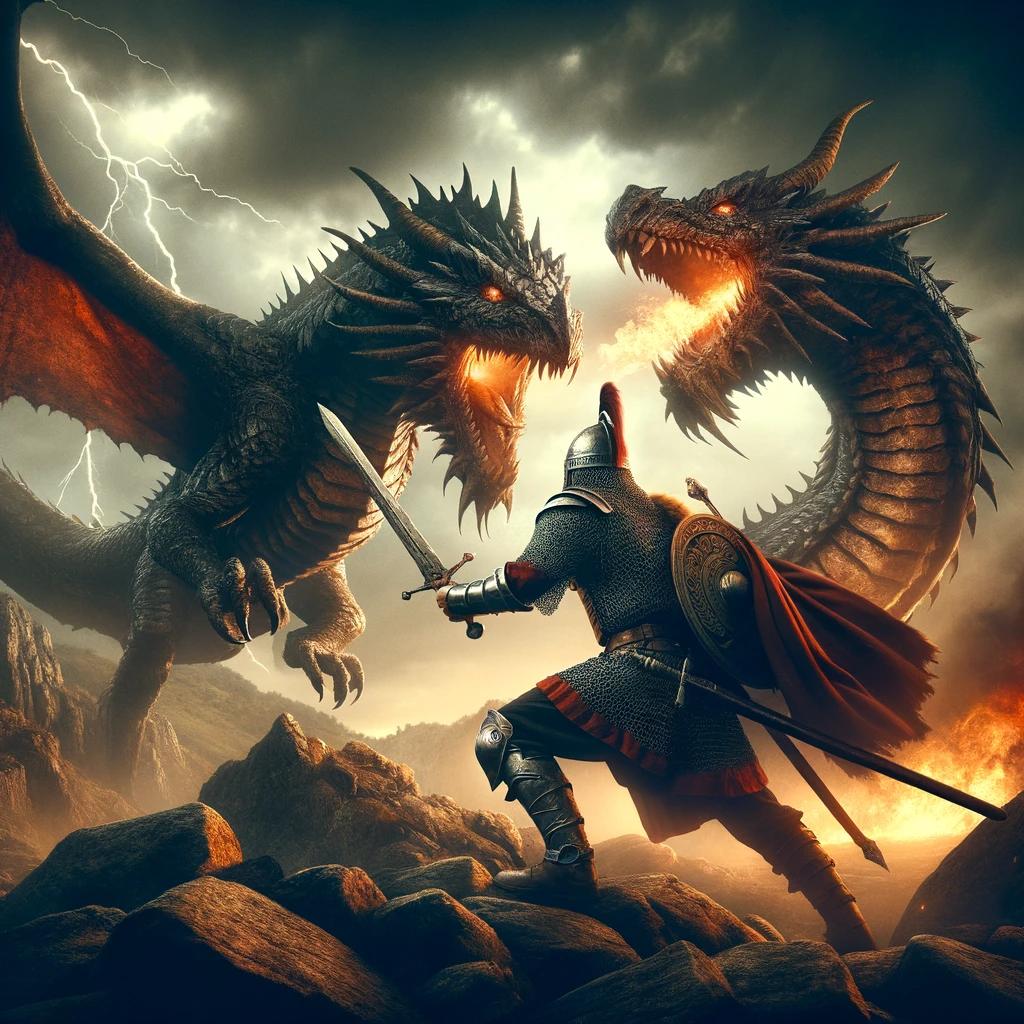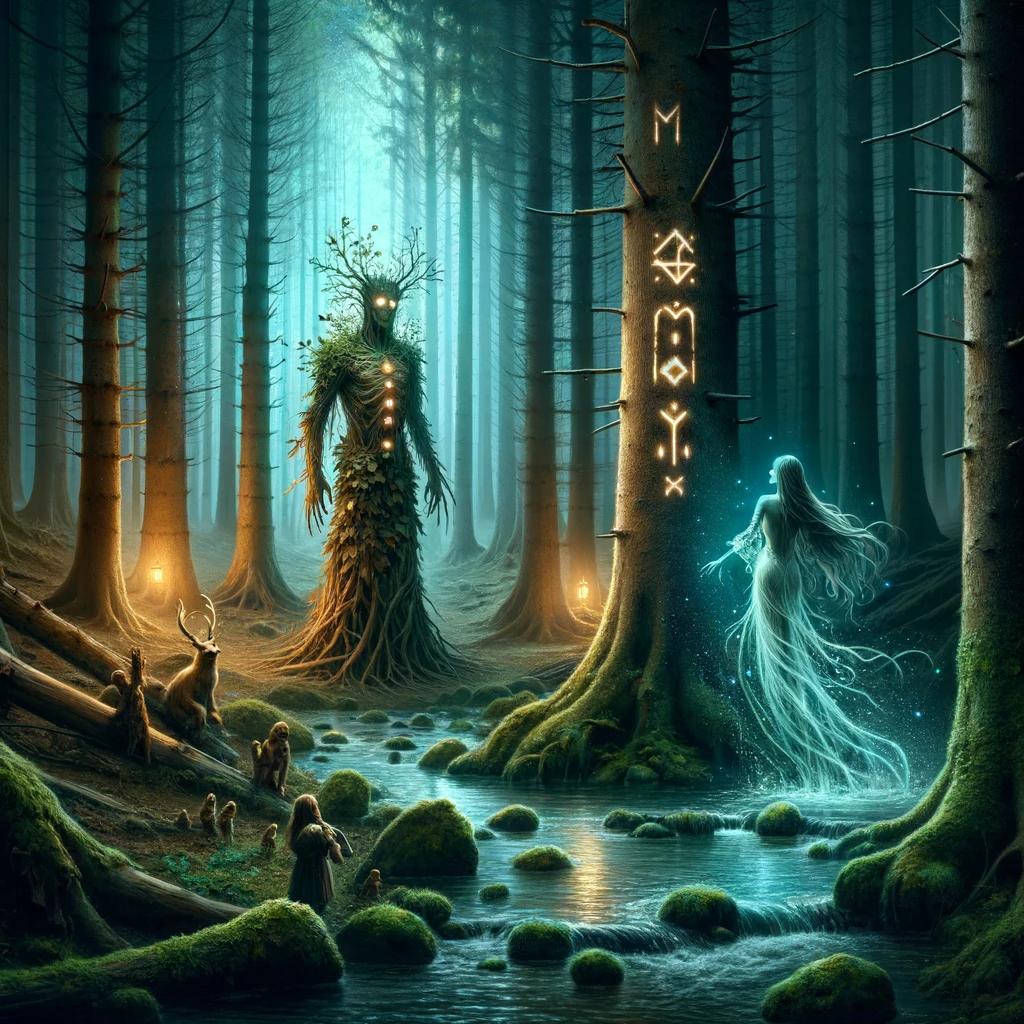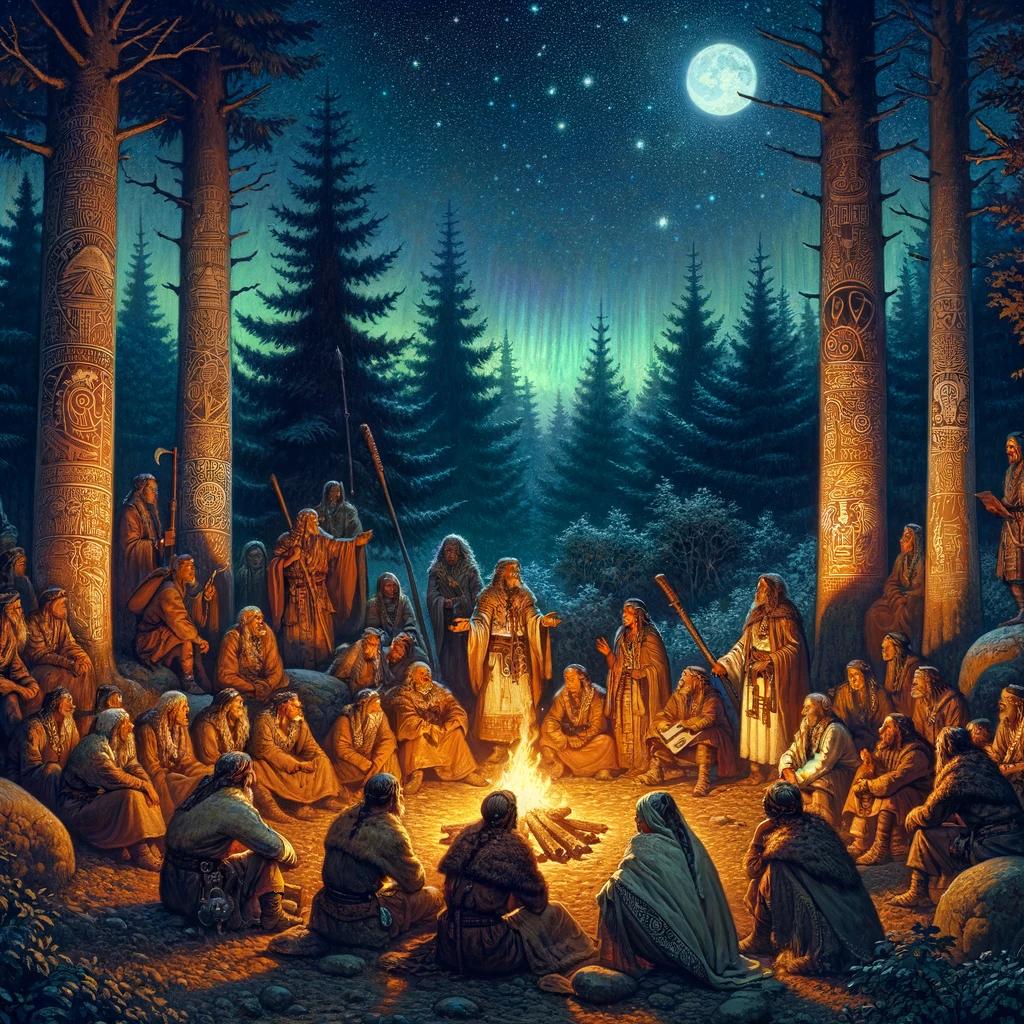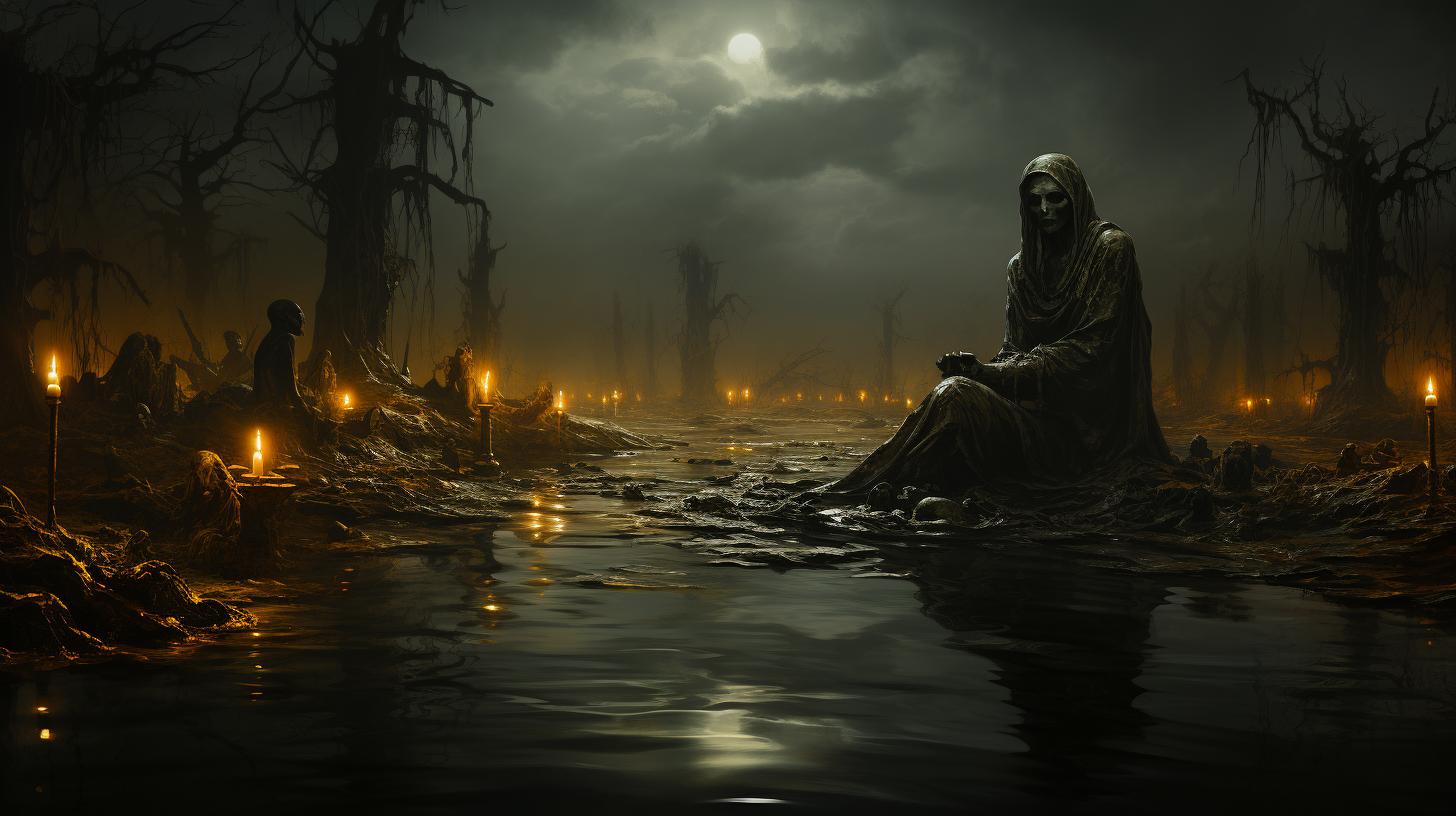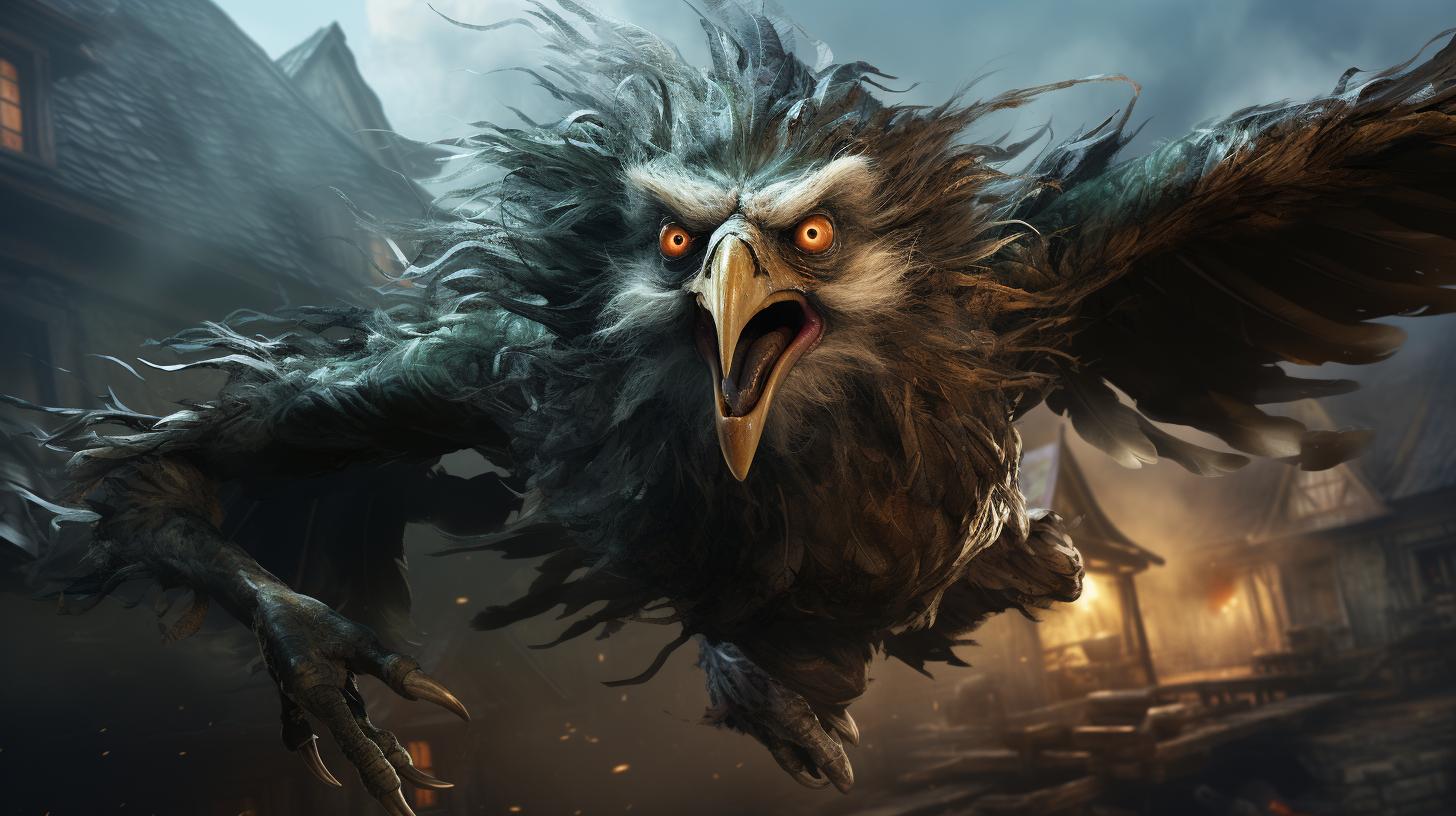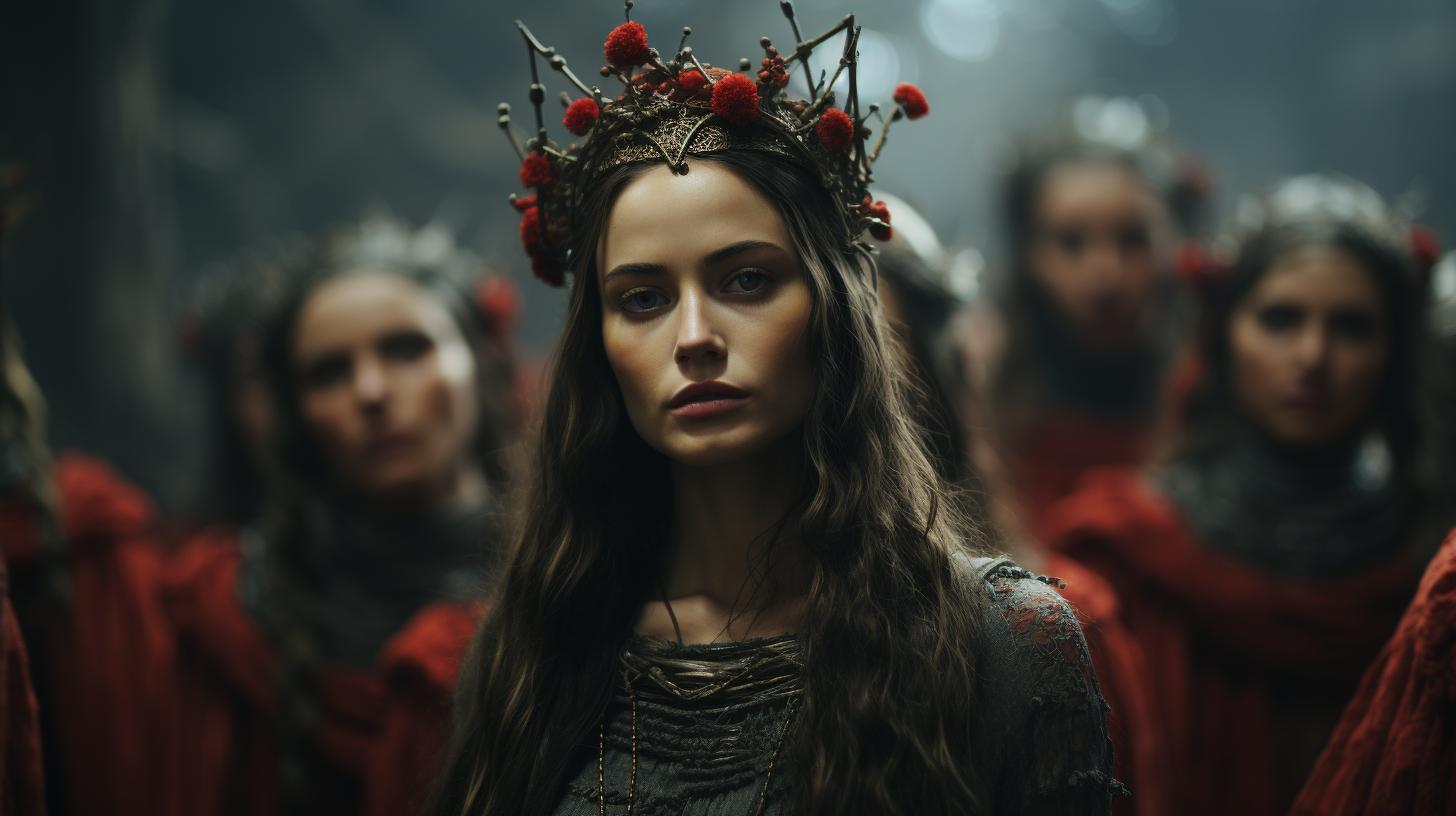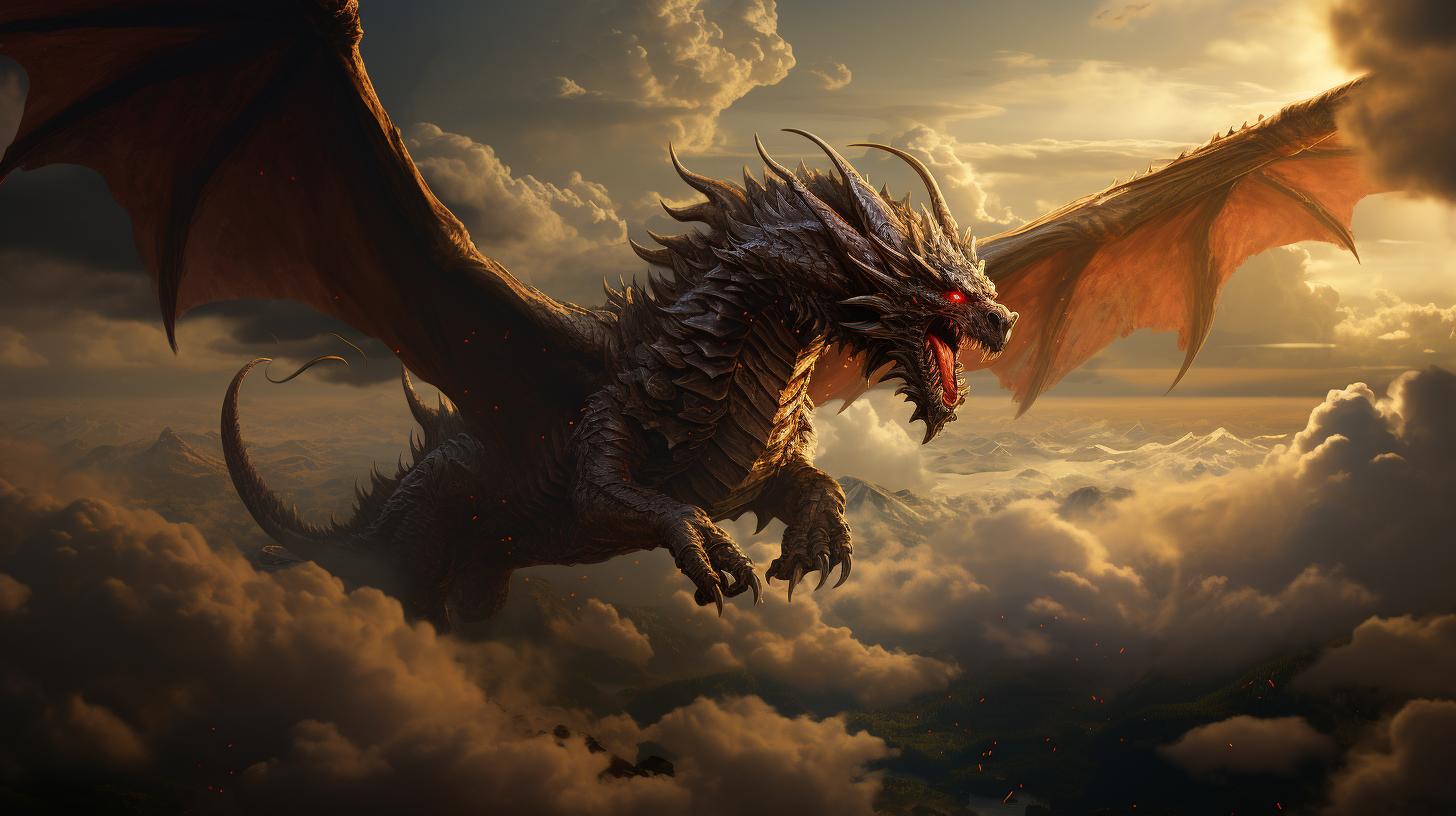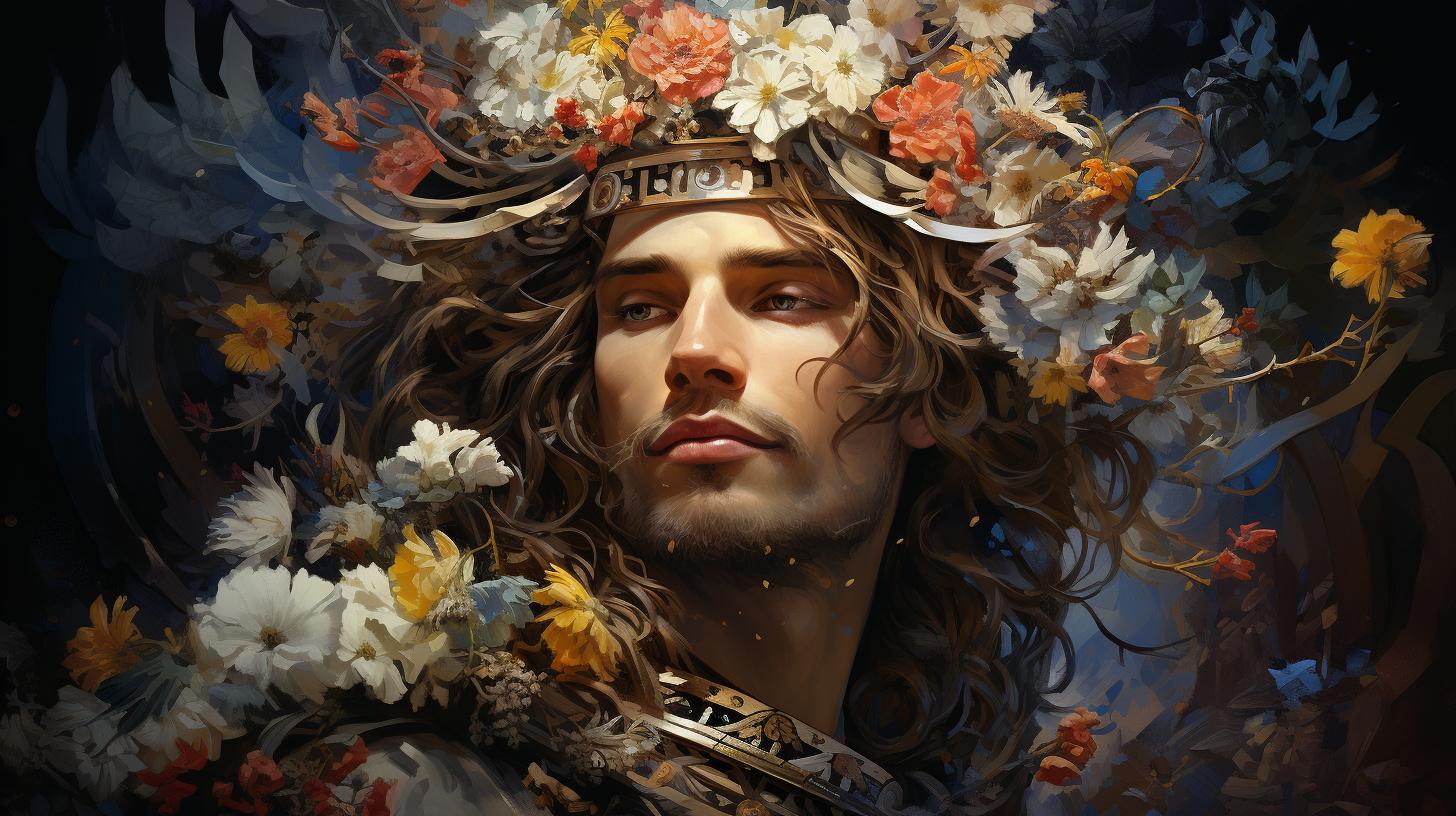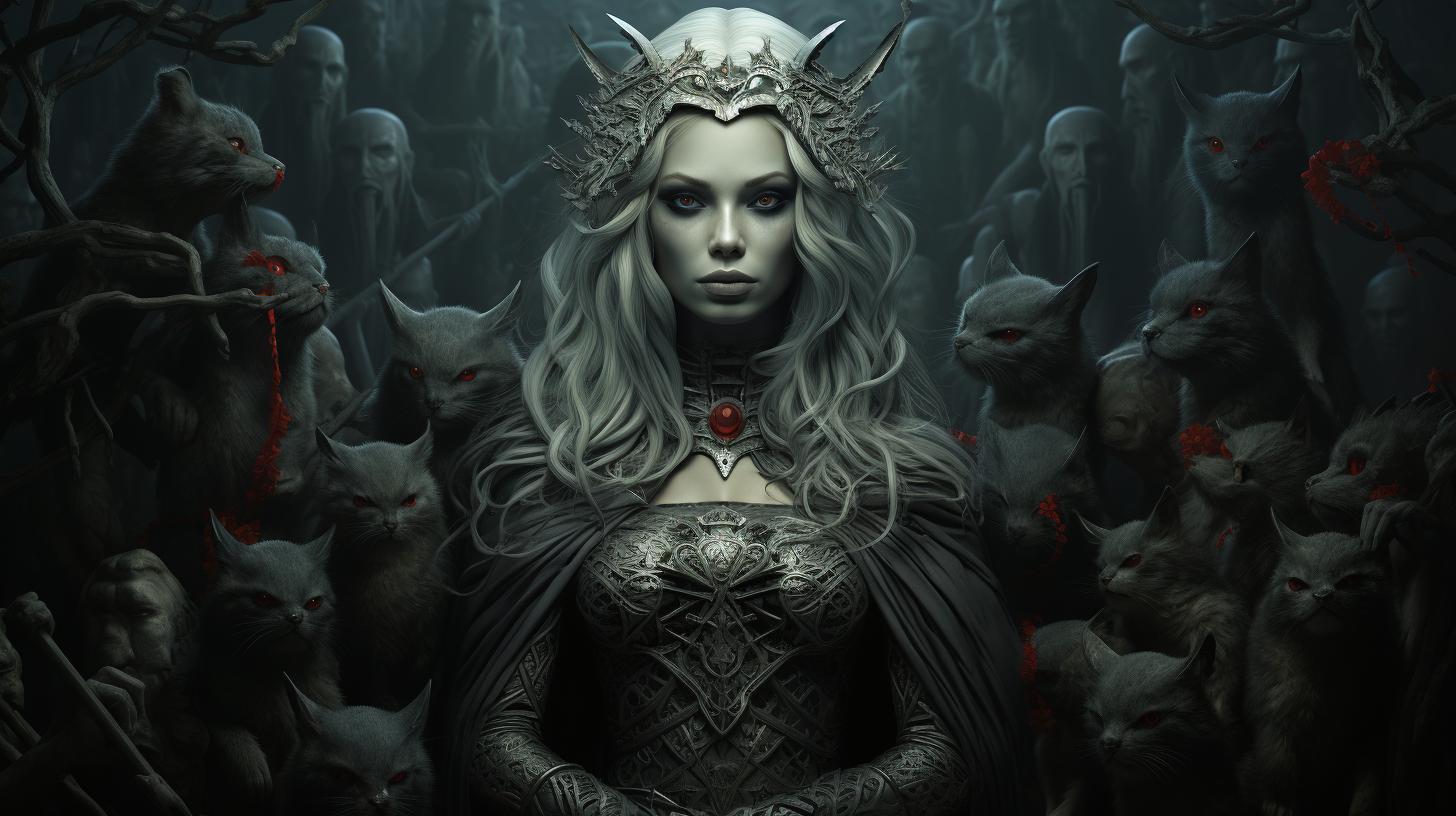Exploring Slavic Myths And Legends: A Fascinating Journey into Ancient Slavic Folklore
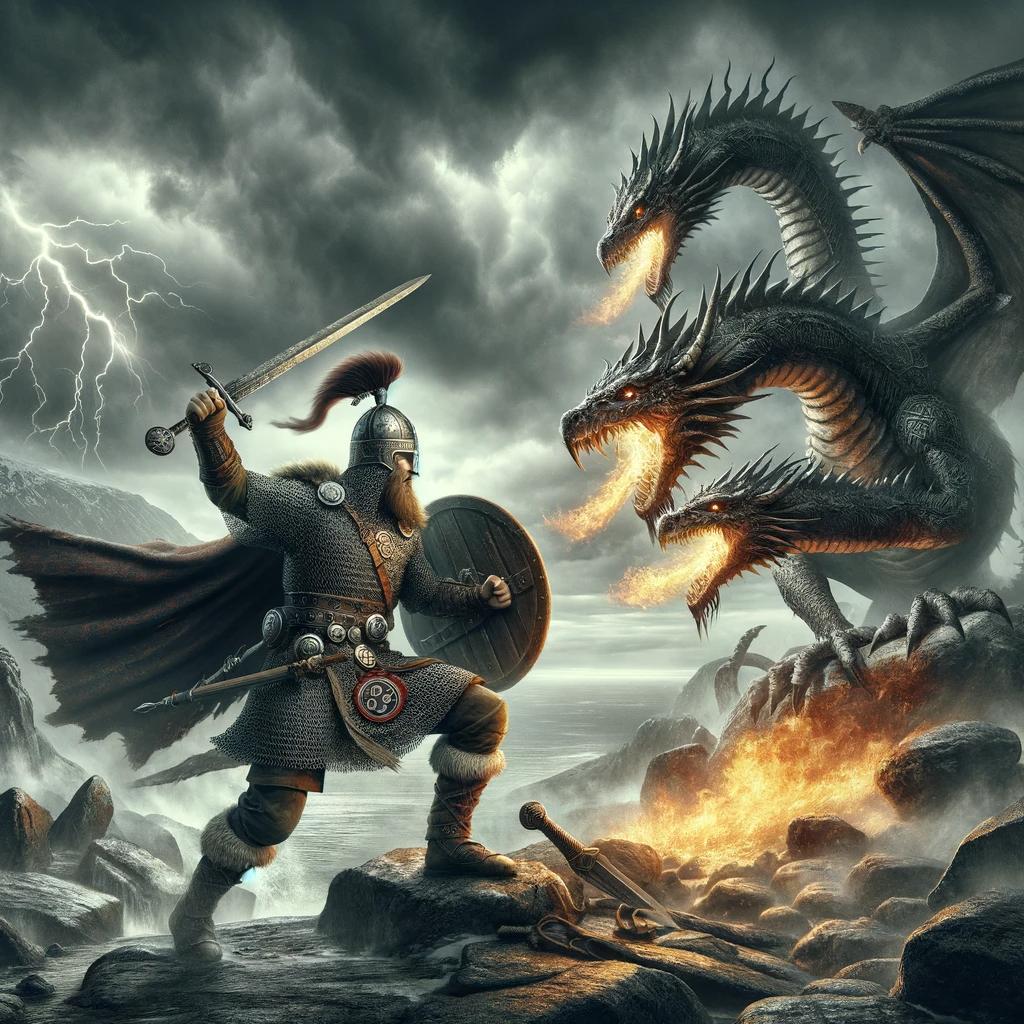
Slavic Myths And Legends, a captivating exploration of ancient folklore from Slavic countries. Discover the origins, deities, and legendary creatures that shaped Slavic mythology. Delve into the intriguing interactions between Slavic mythology and Christianity, as well as its influence in literature and art.
Uncover the symbolism of the World Tree and the significance of the Underworld in Slavic beliefs. Join us on this fascinating journey through the rich tapestry of Slavic myths and legends that continue to intrigue and inspire.
Slavic Mythology: Exploring the Ancient Folklore of Slavic Countries
Slavic Mythology is a captivating realm of ancient folklore that encompasses the beliefs and legends of Slavic countries. Let us delve into the origins of Slavic Mythology, discovering the roots of these enchanting tales.
Origins of Slavic Mythology
The origins of Slavic Mythology lie in the pre-Christian era when the Slavic people practiced a polytheistic belief system. Passed down through oral tradition, these myths and legends played a significant role in shaping the spiritual beliefs of the Slavic communities.
Influence of Slavic Mythology in the Life and Culture of Slavic People
Slavic Mythology permeated all aspects of life within the Slavic communities. Rituals, customs, and celebrations were intertwined with the mythological narratives, shaping their values, traditions, and worldview. This profound influence on their daily lives reflects the importance and enduring legacy of Slavic Mythology.
Relationship Between Slavic Mythology and Slavic Languages
The connection between Slavic Mythology and the Slavic languages is deeply intertwined. Mythological figures, tales, and divine beings have influenced the linguistic expressions, idioms, and symbolism found within Slavic languages, enriching their cultural heritage.
Explore this fascinating tapestry of Slavic Mythology, unravelling the mysteries and uncovering the stories that have captivated generations of Slavic communities.
Slavic Deities: The Gods and Goddesses of Slavic Mythology
The rich tapestry of Slavic mythology is woven with a diverse pantheon of gods and goddesses, each embodying different aspects of nature and human existence. From the mighty god of thunder and war to the nurturing goddess of fertility and motherhood, these deities hold significant roles in Slavic folklore and belief systems.
Perun: The God of Thunder and War
Perun, a powerful and revered deity, reigns as the god of thunder and war. Representing strength and protection, he wields his mighty axe to unleash thunderstorms and defend his people from enemies.
Perun’s presence and influence in Slavic mythology highlight the primal forces of nature and the necessity of bravery in times of conflict.
Veles: The God of Forests and Underworld
Veles, the enigmatic god of forests and the underworld, holds dominion over the realms of animals, magic, and hidden knowledge.
Often depicted as a serpent or horned creature, Veles embodies the wild and mysterious aspects of nature. Worshiped by those seeking guidance and wisdom, Veles is a deity associated with both creation and chaos.
Svarog: The God of Fire and Forge
Svarog, the god of fire and forge, is the master craftsman and divine blacksmith of Slavic mythology. With his blazing hearth and skilled hands, Svarog forges the celestial and earthly realms, shaping the universe and all living beings.
He represents the transformative power of fire and the importance of craftsmanship in Slavic culture.
Dazbog: The God of Sun
Dazbog, the radiant god of the sun, brings light, warmth, and fertility to the world. In Slavic mythology, he is revered as the giver of life and abundance, and his presence ensures the continuation of seasons and agricultural prosperity.
Dazbog’s role underscores the deep connection between the sun, the land, and the livelihood of Slavic communities.
Mokosh: The Goddess of Fertility and Motherhood
Mokosh, the gentle and nurturing goddess of fertility and motherhood, embodies the essence of feminine power and creation. She watches over women, ensuring the fertility of the land and the prosperity of families.
Mokosh is often associated with water sources and the spinning of fate, symbolizing the cyclical nature of life and the interconnectedness of all living things.
Legendary Creatures in Slavic Mythology
Slavic mythology is rich with a variety of fascinating creatures that have captured the imagination of people for centuries.
These legendary beings are deeply intertwined with the beliefs and folklore of the Slavic people. Below, we delve into the intriguing world of these mythical creatures:
Baba Yaga: The Terrifying Witch
Baba Yaga, a formidable and enigmatic figure, is a witch known for her eerie appearance and cunning personality.
She resides in a hut with chicken legs, and her presence strikes fear into the hearts of those who encounter her. Legends paint her as a complex character, both helping and hindering those who seek her assistance.
Rusalka: The Enchanting Water Spirit
Rusalka is a captivating water spirit that appears as a beautiful young maiden. Often found near bodies of water, she possesses an otherworldly charm and allure. These spirits are believed to lure men into the water with their enchanting songs, ultimately leading to their demise, drowning them in a bewitching embrace.
Leshy: The Forest Guardian
Leshy, the guardian of the forest, is a mythical creature believed to protect and care for the natural world. With the ability to shape-shift, Leshy holds a deep connection with animals and trees.
Slavic folklore often portrays Leshy as an unpredictable yet essential entity in maintaining the harmony of the forest.
Domovoi: The House Spirit
Domovoi is a friendly and protective house spirit that watches over the well-being of a household. This creature, often associated with hearths, is believed to bring good fortune to those who honor and respect it.
Domovoi takes on various forms and is known to be particularly fond of children.
Zmei: The Powerful Dragon-like Creature
Zmei, a formidable creature akin to a dragon, possesses great power and symbolism in Slavic mythology. Often associated with wealth and protection, Zmei has the ability to transform into a human form.
Depictions of Zmei emphasize its majestic stature and its role in safeguarding treasures.
These legendary creatures are just a glimpse into the vast array of mythical beings found in Slavic mythology.
From witches to water spirits, forest guardians to house spirits, and powerful dragon-like creatures, Slavic folklore comes alive with captivating tales and enchanting characters that continue to captivate and inspire to this day.
Interactions Between Slavic Mythology and Christianity
The interaction between Slavic Mythology and Christianity is a fascinating aspect of the cultural and religious history of the Slavic people. This section explores the process of Christianization of Slavic Mythology and the subsequent syncretism and coexistence of Slavic Mythology with Christian beliefs.
Christianization of Slavic Mythology
The Christianization of Slavic Mythology refers to the period when Slavic tribes adopted Christianity and incorporated it into their existing belief systems. This process began in the 9th century with the mission of Saints Cyril and Methodius, who introduced the Cyrillic alphabet and translated religious texts into Old Church Slavonic.
The adoption of Christianity brought significant changes to the religious practices and worldview of the Slavic people. Pagan temples were converted into Christian churches, and pagan gods were replaced by Christian saints.
However, the process of Christianization was not immediate or uniform throughout the Slavic lands, and elements of Slavic Mythology continued to coexist with Christianity.
Syncretism and Coexistence of Slavic Mythology and Christian Beliefs
The syncretism and coexistence of Slavic Mythology and Christian beliefs resulted in a unique fusion of traditions and beliefs.
Pagan rituals and festivals were often adapted and transformed into Christian celebrations, allowing the Slavic people to maintain their cultural heritage while embracing the new religion.
This syncretism is evident in the veneration of Christian saints who sometimes took on the characteristics or roles of Slavic deities.
For example, St. George became associated with Perun, the Slavic god of Thunder and War, due to their similar attributes and domains.
Over time, Christian symbols and practices were integrated into the fabric of Slavic Mythology.
Crosses and Christian prayers were incorporated into rituals and talismans, merging the spiritual beliefs of both systems.
- Christianization of Slavic Mythology brought changes to religious practices and beliefs
- Pagan temples were converted into Christian churches
- Pagan gods were replaced by Christian saints
- Syncretism allowed for the coexistence of Slavic Mythology and Christian beliefs
- Pagan rituals transformed into Christian celebrations
- Christian saints and Slavic deities became intertwined
- Christian symbols and practices integrated into Slavic Mythology
Slavic Mythology in Literature and Art
Slavic mythology has left a lasting impact on literature and art throughout history.
The rich tapestry of Slavic myths and legends has inspired countless writers and artists, who have sought to capture the essence of these ancient stories and bring them to life.
Folk Tales and Stories from Slavic Mythology
The folk tales and stories from Slavic mythology hold a special place in the hearts of both the Slavic people and those interested in folklore.
These tales, passed down through generations, showcase the beliefs and values of the ancient Slavic culture.
- The Adventures of Baba Yaga: The iconic witch with her chicken-legged house is a central figure in many Slavic tales, often portrayed as a wise or malicious character.
- The Quest for Veles’ Treasure: This popular story follows a brave hero on a journey to retrieve a valuable artifact guarded by the god Veles, representing the eternal struggle between chaos and order.
- The Wisdom of Mokosh: Mokosh, the goddess of fertility and motherhood, features in numerous tales that explore the importance of nature and femininity in Slavic mythology.
Influence of Slavic Mythology on European Art and Literature
The influence of Slavic mythology on European art and literature cannot be overstated.
Artists and writers from all over Europe have drawn inspiration from Slavic myths, incorporating their themes and characters into their works.
- Visual Representations: Painters like Ivan Bilibin and Viktor Vasnetsov depicted scenes from Slavic mythology, infusing their art with the enchanting atmosphere and iconic figures of Slavic folklore.
- Literary Masterpieces: Renowned authors such as Alexander Pushkin and Nikolai Gogol incorporated elements of Slavic mythology into their works, showcasing the enduring appeal and timeless relevance of these ancient stories.
- Music and Opera: Composers like Modest Mussorgsky and Nikolai Rimsky-Korsakov composed music based on Slavic mythology, bringing the mythical world to life through symphonies and operas.
Modern Interpretations of Slavic Mythology in Literature and Art
Even in modern times, Slavic mythology continues to captivate artists and writers, who reinterpret these ancient stories in innovative and thought-provoking ways.
- Contemporary Novels: Authors such as Andrzej Sapkowski and Katherine Arden have drawn upon Slavic mythology to create compelling fantasy worlds that blend traditional folklore with modern storytelling.
- Film and Television: Slavic mythology has also found its way into the visual medium, inspiring movies and TV shows that bring these ancient tales to a wider audience.
- Educational Initiatives: Scholars and enthusiasts strive to preserve and promote the study of Slavic mythology, ensuring that its rich cultural heritage remains alive and relevant for future generations.
The Symbolism of the World Tree in Slavic Mythology
The World Tree holds profound symbolism within Slavic mythology, representing a connection between the divine and mortal realms.
It is believed to be a cosmic axis, linking heaven, earth, and the underworld. This symbolic tree is often depicted as reaching through the realms, with its roots delving deep into the underworld and its branches stretching towards the heavens.
The World Tree as a Connection Between the Divine and Mortal Realms
According to Slavic beliefs, the World Tree acts as a bridge between the mortal realm and the divine realms. It is revered as a sacred link that provides access to higher realms and spiritual energies.
The tree’s trunk symbolizes stability and grounding, while its branches reach towards the heavens, symbolizing ascent and connection with the divine.
The Three-headed Chthonic God and the World Tree
In Slavic mythology, the World Tree is often associated with the three-headed chthonic god, who guards the entrance to the underworld. This god serves as a protector and guide, overseeing the transition between the mortal realm and the realm of the dead.
The World Tree is believed to be the god’s abode, further emphasizing its significance as a gateway between realms.
The Significance of the World Tree in Slavic Cosmology
The World Tree plays a vital role in Slavic cosmology, as it represents the interconnectedness of all existence. It symbolizes harmony, balance, and the cyclical nature of life. The tree’s roots, extending into the underworld, represent the ancestral connections and the cycle of life, death, and rebirth.
Its branches reaching towards the heavens symbolize transcendence and the eternal nature of the soul.
The profound symbolism of the World Tree in Slavic mythology reveals the intricate relationship between mortal beings and the divine.
It serves as a reminder of our connection to the spiritual realms and the cyclical nature of existence. Understanding the symbolism of the World Tree provides insights into the core beliefs and values held by the ancient Slavic people.
Slavic Mythology and the Underworld
Explore the beliefs and representations of the underworld in Slavic mythology, delving into the realm of the dead and its significance in Slavic beliefs. Discover the captivating myths and legends surrounding the journey to the underworld in Slavic folklore.
Beliefs and Representations of the Underworld in Slavic Mythology
In Slavic mythology, the underworld is a realm shrouded in mystery and symbolism. It is believed to be the dwelling place of the deceased and various supernatural beings. The underworld is often depicted as an underground realm or a subterranean world, filled with dark forests, rivers, and mountains.
It is a realm where the boundaries between the living and the dead blur, and where spirits and mythical creatures reside.
The Slavic belief in the underworld stems from the understanding that death is not the end of existence but a transition to another realm.
This belief is reflected in rituals and practices, as well as in myths and legends that revolve around the journey to the underworld.
The Realm of the Dead and Its Importance in Slavic Beliefs
The realm of the dead holds great importance in Slavic beliefs.
It is considered a sacred place, where ancestors and spirits dwell. Slavic people hold deep reverence for their ancestors and believe in maintaining a connection with them. The realm of the dead is seen as a source of wisdom and guidance, and communication with the spirits of the deceased is believed to be possible through various rituals and traditions.
Slavic festivals and ceremonies are often dedicated to honoring the dead and seeking their blessings. These rituals play a significant role in maintaining a spiritual connection with the ancestors and ensuring their continued presence in the lives of the living.
Journey to the Underworld: Myths and Legends in Slavic Folklore
Slavic folklore is replete with captivating myths and legends centered around the journey to the underworld. These stories often feature brave heroes or heroines who embark on perilous quests to rescue departed loved ones or obtain valuable knowledge from the realm of the dead.
One such famous myth is the story of Orpheus and Eurydice, a tale of love and loss where Orpheus ventures into the underworld to bring back his beloved Eurydice. This myth reflects the Slavic belief in the boundary-crossing capabilities of certain individuals and the power of love and determination in overcoming obstacles.
Other myths and legends reveal the challenges and trials one must face on their journey to the underworld, such as encountering monstrous creatures or navigating treacherous landscapes. These stories provide insight into the deep-rooted beliefs surrounding death, the afterlife, and the interconnectedness of the living and the dead in Slavic mythology.
The Myth of Perun and Veles: Thunder and Chaos
The Myth of Perun and Veles is a captivating tale from Slavic mythology that explores the dynamic between Thunder and Chaos. Perun, known as the Supreme God, represents thunder and war, symbolizing power and strength.
Veles, on the other hand, is the God of Chaos, associated with forests and the Underworld. Both gods play significant roles in Slavic myths and are often depicted as fierce adversaries.
Conflict and Alliance Between Perun and Veles in Slavic Mythology
The Myth of Perun and Veles revolves around their eternal conflict. Perun, with his thunderbolts, fiercely battles against Veles, who takes the form of various creatures to challenge his adversary.
This endless struggle represents the cosmic battle between order and chaos, highlighting the delicate balance maintained in the Slavic belief system.
However, despite their rivalry, there are instances in which Perun and Veles form an alliance.
They join forces to defeat common enemies and restore harmony to the world. This alliance showcases the complexity of Slavic mythology, where opposing forces can come together for a greater purpose.
Symbolism and Meanings Behind the Myth of Perun and Veles
The Myth of Perun and Veles is rich in symbolism and profound meanings. Perun represents the forces of nature, particularly the destructive power of thunder and lightning. He embodies order, justice, and protection, while Veles embodies chaos, trickery, and the wild forces of nature.
Symbolically, the conflict between Perun and Veles represents the eternal struggle between good and evil, light and darkness, order and chaos. It serves as a reminder of the delicate balance necessary for the world to exist in harmony.
The myth also reflects the Slavic belief in the cyclical nature of life, as Perun and Veles continuously clash and reconcile.
Overall, the Myth of Perun and Veles offers profound insights into the Slavic worldview, exploring themes of power, conflict, and the intricate relationship between opposing forces.
This timeless myth continues to captivate and inspire, offering a glimpse into the fascinating world of Slavic myths and legends.
Slavic Mythology and Nature
The ancient Slavic beliefs regarded the Earth and nature as sacred elements intertwined with their mythological traditions. Nature held a significant role in the Slavic pantheon, symbolizing the cyclical patterns of life and the divine forces that governed the world.
The Earth and Nature as Sacred Elements in Slavic Beliefs
In Slavic mythology, the Earth was revered as a living entity, the Great Mother, representing fertility, abundance, and rebirth. The Slavic people believed that the Earth provided sustenance and nurtured all life forms.
They acknowledged the interconnectedness of humans, animals, plants, and the environment.
Forests, rivers, mountains, and other natural landscapes held immense spiritual significance. People worshipped at sacred sites in nature, seeking blessings, protection, and harmony with the natural world.
These sacred places were believed to be gateways to the divine realms and were often associated with specific deities.
The Connection Between Gods and the Natural World in Slavic Mythology
Slavic mythology portrayed a strong connection between gods and the natural world. The deities were believed to control various aspects of nature, such as weather, agriculture, and the cycles of life and death.
They were seen as protectors and patrons of specific elements, animals, and natural phenomena.
For instance, Perun, the god of thunder and war, controlled lightning and storms, while Veles, the god of forests and the underworld, governed the earth and its hidden realms.
Other deities like Svarog, Dazbog, and Mokosh were associated with fire, the sun, and fertility, respectively.
The Slavic people respected and sought guidance from these gods, believing that maintaining a harmonious relationship with the natural world could bring prosperity, health, and protection.
Role of Nature in Rituals and Traditions of Slavic Mythology
Nature played a central role in the rituals and traditions of Slavic mythology. The cycles of the seasons and agricultural activities influenced their religious observances and celebrations. Festivals dedicated to the planting and harvest seasons were held to honor the gods and seek their blessings for bountiful crops.
- During these rituals, offerings of food, flowers, and symbolic items were made to the deities at sacred groves, rivers, or mountains.
- People participated in processions, danced, and sang hymns to show their reverence and gratitude.
- Special ceremonies were conducted to mark important natural events like solstices and equinoxes, acknowledging the shifting energies of the Earth.
These rituals fostered a deep connection with nature and reaffirmed the balance between humans and the environment.
They served as a means of preserving cultural heritage and strengthening the bond within the community.
Through their belief system, the Slavic people recognized the vital role of nature in their lives.
It influenced their spirituality, shaped their worldview, and reinforced their interconnectedness with the natural world.
Slavic Mythology Creatures and Beings
Slavic mythology is rich in a diverse range of mythical creatures and beings, which play significant roles in the folklore and legends of Slavic countries. These creatures are often enigmatic and possess unique characteristics that add depth and intrigue to the stories they inhabit.
Mythical Creatures Associated with Slavic Mythology
Among the mythical creatures associated with Slavic mythology, several stand out for their distinctive appearances and abilities. These creatures include:
- Leshy: A forest guardian known for his ability to shape-shift and protect the animals and trees of the forests.
- Baba Yaga: A terrifying witch with a hut that stands on chicken legs, known for her cunning and frightening appearance.
- Rusalka: An enchanting water spirit often depicted as a beautiful young woman, luring men to the depths of water.
- Domovoi: A house spirit believed to bring good fortune and protect the inhabitants of the household.
- Zmei: A powerful dragon-like creature associated with wealth and protection.
Gods and Creatures of Slavic Mythology in Folklore and Legends
In addition to these mythical creatures, Slavic mythology also features gods and deities that are closely intertwined with various creatures in folklore and legends.
These include:
- Perun: The god of thunder and war, often depicted with his sacred weapon, the lightning bolt.
- Veles: The god of forests and the underworld, representing chaos and the natural world.
- Svarog: The god of fire and forge, associated with craftsmanship and creation.
- Dazbog: The god of the sun, symbolizing warmth, light, and fertility.
- Mokosh: The goddess of fertility and motherhood, revered for her nurturing qualities.
These gods and creatures have left an indelible mark on Slavic folklore and legends, permeating the cultural fabric and inspiring generations of storytellers and artists.
Gods and Goddesses in Slavic Mythology: Prayers and Worship
In Slavic Mythology, prayers and worship played a significant role in connecting with the gods and goddesses. It was a way for the Slavic people to express their reverence and seek blessings from these divine entities.
Let’s explore the different aspects of prayers and offerings, rituals and practices, and understand the importance of worshiping deities in Slavic Mythology.
Prayers and Offerings to Slavic Deities
Prayers were an essential part of Slavic religious practices. The Slavic people would offer prayers to various gods and goddesses to seek their favor, protection, and blessings. These prayers were often accompanied by offerings, such as food, drinks, flowers, or other symbolic items.
It was a way to show gratitude and establish a connection with the divine forces.
Rituals and Practices in Slavic Pagan Religion
Slavic paganism involved a variety of rituals and practices that were performed to honor and appease the gods and goddesses. These rituals were usually conducted by priests or priestesses, who acted as intermediaries between the mortal realm and the divine realm.
Some common practices included sacred dances, chanting of hymns, purification rituals, and ceremonial feasts. These rituals aimed to maintain harmony with the gods and ensure the well-being of the community.
Importance of Worshiping Deities in Slavic Mythology
Worshiping the deities held immense significance in Slavic Mythology. It fostered a sense of spiritual connection, guidance, and protection for the Slavic people. By worshiping the gods and goddesses, they believed they could gain favor and blessings, as well as ward off misfortune and evil forces.
It was a way to maintain balance in the natural and supernatural realms, ensuring the prosperity and well-being of the community as a whole.
The End of Slavic Mythology and Its Legacy
Decline and Transformation of Slavic Mythology
The decline of Slavic mythology began with the Christianization of the Slavic people.
As Christianity gained prominence, the pagan beliefs gradually faded away. The introduction of new religious practices and the influence of Christian scriptures played a significant role in transforming and reshaping Slavic mythology.
Many pagan rituals were replaced or adapted into Christian traditions, blending elements of both belief systems.
Influence and Preservation of Slavic Mythology in Modern Culture
Although Slavic mythology declined over time, its influence can still be seen in various aspects of modern culture. Elements of Slavic myth and folklore have been preserved through oral traditions, literature, art, and even in the names of places and landmarks.
The enduring legacy of Slavic mythology can be seen in the continued fascination and exploration of these ancient tales.
Continuing Interest and Study of Slavic Myths and Legends in the Present Day
Even today, there is a continued interest in the study and appreciation of Slavic myths and legends.
Scholars, researchers, and enthusiasts continue to delve into the rich tapestry of Slavic folklore, striving to understand its significance and uncover hidden meanings. This ongoing exploration keeps the stories alive and ensures that the legacy of Slavic mythology endures for future generations.
.

